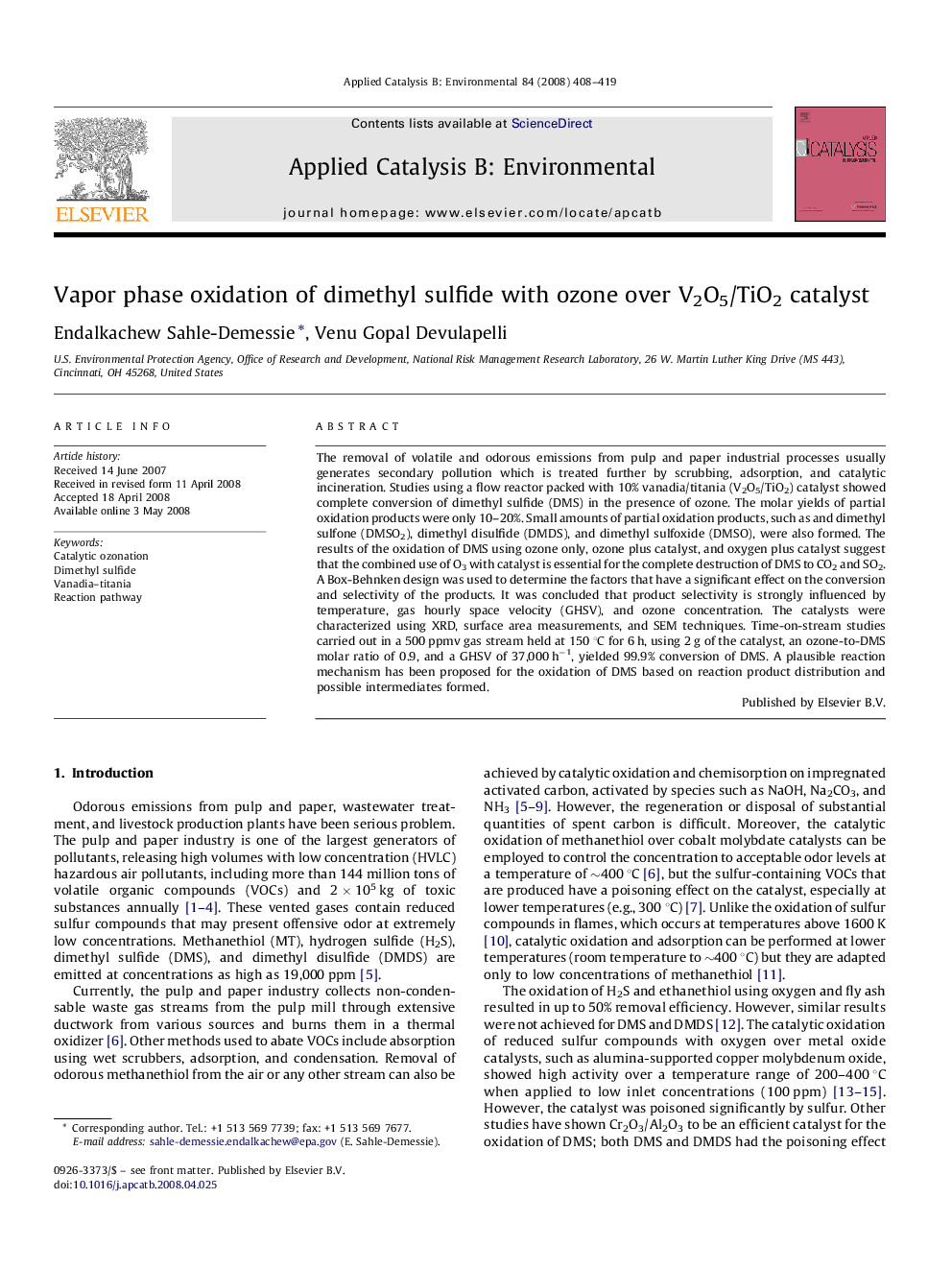| Article ID | Journal | Published Year | Pages | File Type |
|---|---|---|---|---|
| 48173 | Applied Catalysis B: Environmental | 2008 | 12 Pages |
The removal of volatile and odorous emissions from pulp and paper industrial processes usually generates secondary pollution which is treated further by scrubbing, adsorption, and catalytic incineration. Studies using a flow reactor packed with 10% vanadia/titania (V2O5/TiO2) catalyst showed complete conversion of dimethyl sulfide (DMS) in the presence of ozone. The molar yields of partial oxidation products were only 10–20%. Small amounts of partial oxidation products, such as and dimethyl sulfone (DMSO2), dimethyl disulfide (DMDS), and dimethyl sulfoxide (DMSO), were also formed. The results of the oxidation of DMS using ozone only, ozone plus catalyst, and oxygen plus catalyst suggest that the combined use of O3 with catalyst is essential for the complete destruction of DMS to CO2 and SO2. A Box-Behnken design was used to determine the factors that have a significant effect on the conversion and selectivity of the products. It was concluded that product selectivity is strongly influenced by temperature, gas hourly space velocity (GHSV), and ozone concentration. The catalysts were characterized using XRD, surface area measurements, and SEM techniques. Time-on-stream studies carried out in a 500 ppmv gas stream held at 150 °C for 6 h, using 2 g of the catalyst, an ozone-to-DMS molar ratio of 0.9, and a GHSV of 37,000 h−1, yielded 99.9% conversion of DMS. A plausible reaction mechanism has been proposed for the oxidation of DMS based on reaction product distribution and possible intermediates formed.
